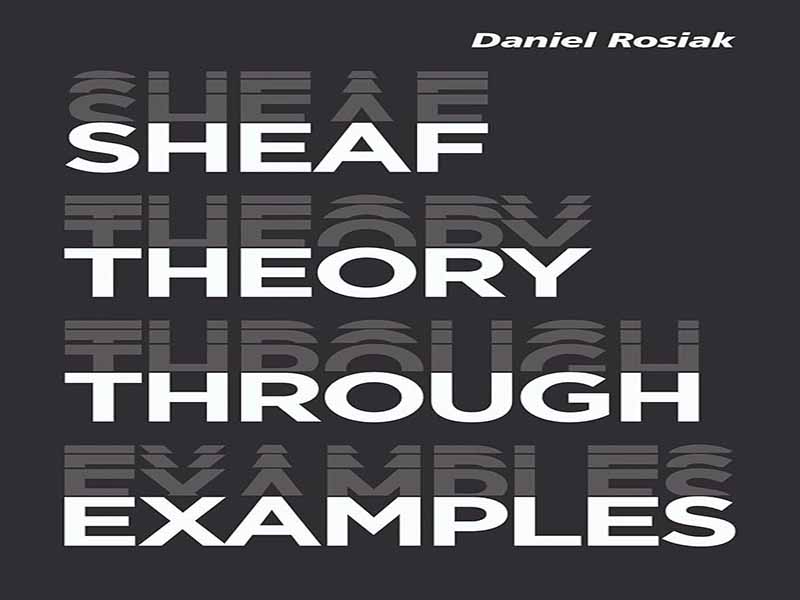- عنوان کتاب: Sheaf Theory through Examples
- نویسنده: Daniel Rosiak
- سال انتشار: 2022
- حوزه: نظریه ریاضی
- تعداد صفحه: 453
- زبان اصلی: انگلیسی
- نوع فایل: pdf
- حجم فایل: 8.68 مگابایت
در بسیاری از موارد، رویدادها و اشیاء در طول زمان و مکان به مشاهده داده میشوند و بنابراین دادههای مربوط به آنها محلی و به نوعی توزیع میشوند. در حال حاضر، میتوانیم این وضعیت را برحسب دادههایی که توسط مناطق یا دامنههای مشخص شده از برخی حسگرها نمایهسازی شده یا به آنها متصل میشوند، در نظر بگیریم. به روشی بسیار کلی و تقریبی، بوسیله محلی ما معمولاً درک می کنیم که چیزی با آنچه در اطراف یا نزدیک آن است مقایسه می شود. این برخلاف جهانی است که به طور کلی در مقایسه با همه چیز یا در کل حوزه مورد علاقه به معنای آن است. جلب رضایت یک دارایی در سطح محلی لزوماً مستلزم آن نیست که در سطح جهانی نیز به آن دست یابد. با گفتن اینکه داده ها محلی هستند، منظور ما این است که در سراسر یک منطقه محدود خاص وجود دارد یا برای آن تعریف شده است. یعنی اعتبار آن به یک منطقه تجویز شده یا دامنه جزئی یا زمینه مرجع محدود می شود. ما همچنین از این زبان محلی برای توصیف روشی برای ارزیابی یک ویژگی یا داده منتسب به بخشی یا نقطه دامنه گسترده آن بر حسب اینکه آن ویژگی یا داده از محیط اطراف آن شبیه به نظر می رسد – یعنی هر زمان که در جایی نگهداری می شود، استفاده می کنیم. ، همچنین باید در نزدیکی نگه داشته شود. ما خوانش های دما و فشار را جمع آوری می کنیم و بنابراین تصوری از محدوده دماها و فشارهای ممکن در مناطق جغرافیایی خاص را تشکیل می دهیم. ما ذخیره نوسان محصولات را در یک کارخانه در چرخه های تجاری خاص ثبت می کنیم. ما مشاهدات یا تصاویری از تکه های خاصی از آسمان یا زمین را جمع آوری می کنیم. ما شهادت ها یا گزارش هایی را در مورد رویدادهای خاصی جمع آوری می کنیم که به نظر می رسد در منطقه خاصی از فضا-زمان رخ داده است. ما مجموعه ای از نتایج آزمایش مربوط به قسمت های مختلف بدن انسان را ایجاد می کنیم. مجموعهای از خاطرات یا ضبطشدههای تفاسیر متمایز خود از یک قطعه موسیقی را جمعآوری میکنیم. ما مشاهداتی را ایجاد می کنیم که اصول یا قوانین اخلاقی و حقوقی در سراسر منطقه یا شبکه ای از بازیگران انسانی مورد احترام قرار می گیرند. ما مفهومی از میز آشپزخانه خود را از طریق مشاهدات و برخوردهای مختلف شکل میدهیم، و ویژگیهای خاصی را به آن مناطق فضا-زمان اختصاص میدهیم و برخوردهای مختلف ما با جدول را مشخص میکنیم، جایی که انتظار داریم ویژگیها یا ویژگیهای نسبت داده شده در کل یک منطقه وجود داشته باشد. گسترش آنها حتی اگر پدیدههای خاصی ذاتاً محلی نباشند، اغلب اندازهگیری آنها یا روشی که در جمعآوری دادهها به کار میرود ممکن است همچنان محلی باشد. اما حتی افرادی که کمتر دقیق هستند، صرفاً نقاط داده محلی یا جزئی را جمع آوری یا جمع نمی کنند. از سنین پایین، ما سعی میکنیم حالتهای مختلف اتصالات و همکاریهای بین دادهها را درک کنیم، تا جایی که ممکن است این قطعات جزئی را در یک کل بزرگتر وصله کنیم، ناسازگاریها را در بین قطعات مختلف حل کنیم، و به ساختن منسجم و جهانیتر ادامه دهیم. رؤیاهایی از آنچه ممکن است تنها به صورت تکه تکه به ما داده شده باشد. به عنوان شهروندان آگاه یا دانشمندان، به دادههایی که در مورد نرخ ذوب یخهای قطب شمال، تغییرات دما در مناطق خاص، غلظت گازهای گلخانهای در عرضهای جغرافیایی مختلف و اعماق اقیانوسها و غیره به ما داده شده است، نگاه میکنیم و میسازیم. یک چشم انداز جهانی تر از تغییرات در کل سیاره ما بر اساس ارتباطات و بازخورد بین این داده های مختلف. ما به عنوان محقق یک جنایت، باید یک گزارش کامل و منسجم از وقایع را از روی گزارشهای جزئی شاهدان مختلف جمع آوری کنیم. به عنوان پزشک، ما باید از نتایج آزمایشات فردی مختلف مربوط به بخشهای بدن بیمار، تشخیص و برنامه عمل را استنباط کنیم. ما مشاهدات بسیار خود را در مورد رفتار شبکههای خاصی از بازیگران انسانی میگیریم و سعی میکنیم دستورالعملها یا اصول اخلاقی جهانی را شکل دهیم تا در برخوردهای بعدی ما را راهنمایی کنند. با این حال گاهی اوقات اطلاعات به سادگی ماهیت محلی ندارند. تقریباً، میتوان چنین غیرمحلی را از این نظر در نظر گرفت که چگونه، بهعنوان ادراککننده، برخی از ویژگیهای یک فضا ممکن است به شکلی خاص برای ما ظاهر شوند، اما پس از آن دیگر خود را به گونهای در بخشهای فرعی آن فضا نشان ندهند، در این صورت نمیتوانیم واقعاً تصور کنید که این برداشت از قطعات محلی ساخته شده است. برای مثالی دیگر: در بازی ScrabbleTM، تخصیص حروف، تک تک، تک تک مربعها در شبکهای از مربعها، با هدف ساختن کلمات از چنین تکالیفی در نظر گرفته میشود.
In many cases, events and objects are given to observation as extended through time and space, and so the data about these is local and distributed in some fashion. For now, we can think of this situation in terms of the data being indexed by, or attached to, given delimited regions or domains of some sensors. In a very general and rough way, by local we typically understand that something is being compared to what is around or nearby it; this is as opposed to the global, generally understood to mean compared to everything or across an entire domain of interest. Satisfying a property at a local level does not necessarily entail that the same will obtain at the global level. In saying that the data is local, we just mean that it holds throughout, or is defined for, a certain limited region; that is, its validity is restricted to a prescribed region or partial domain or reference context. We also use this language of locality to describe a way of evaluating a property or data ascribed to a part or point of its extended domain in terms of what that property or data looks like viewed from its immediate surroundings—that is, whenever it holds somewhere, it should also hold nearby. We collect temperature and pressure readings and thus form a notion of ranges of possible temperatures and pressures over certain geographical regions; we record the fluctuating stockpile of products in a factory over certain business cycles; we accumulate observations or images of certain patches of the sky or the earth; we gather testimonies or accounts about particular events understood to have unfolded over a certain region of space-time; we build up a collection of test results concerning various parts of the human body; we amass collections of memories or recordings of our distinct interpretations of a certain piece of music; we develop observations about which ethical and legal principles or laws are respected throughout a given region or network of human actors; we form a concept of our kitchen table via various observations and encounters, assigning certain attributes to those regions of space-time delimiting our various encounters with the table, where we expect that the ascribed properties or attributes are present throughout the entirety of a region of their extension. Even if certain phenomena are not intrinsically local, frequently their measurement or the method employed in data collection may still be local. But even the least scrupulous person does not merely accumulate or amass local or partial data points. From an early age, we try to understand the various modes of connections and cooperations between the data, to patch these partial pieces together into a larger whole whenever possible, to resolve inconsistencies among the various pieces, to go on to build coherent and more global visions out of what may have been given to us only in pieces. As informed citizens or as scientists, we look at the data given to us on arctic sea-ice melting rates, on temperature changes in certain regions, on concentrations of greenhouse gases at various latitudes and various ocean depths, and so on, and we build a more global vision of the changes to our entire planet on the basis of the connections and feedbacks between these various data. As investigators of a crime, we must piece together a complete and consistent account of the events from the partial accounts of various witnesses. As doctors, we must infer a diagnosis and a plan of action from the various individual test results concerning the parts of a patient’s body. We take our many observations concerning the behavior of certain networks of human actors and try to form global ethical guidelines or principles to guide us in further encounters. Yet sometimes information is simply not local in nature. Roughly, one might think of such nonlocality in terms of how, as perceivers, certain attributes of a space may appear to us in a particular way but then cease to manifest themselves in such a way over subparts of that space, in which case one cannot really think of the perception as being built up from local pieces. For a different example: in the game of ScrabbleTM, one considers the assignment of letters, one by one, to the individual squares in a lattice of squares, with the aim of building words out of such assignments.
این کتاب را میتوانید از لینک زیر بصورت رایگان دانلود کنید:
Download: Sheaf Theory through Examples



































نظرات کاربران